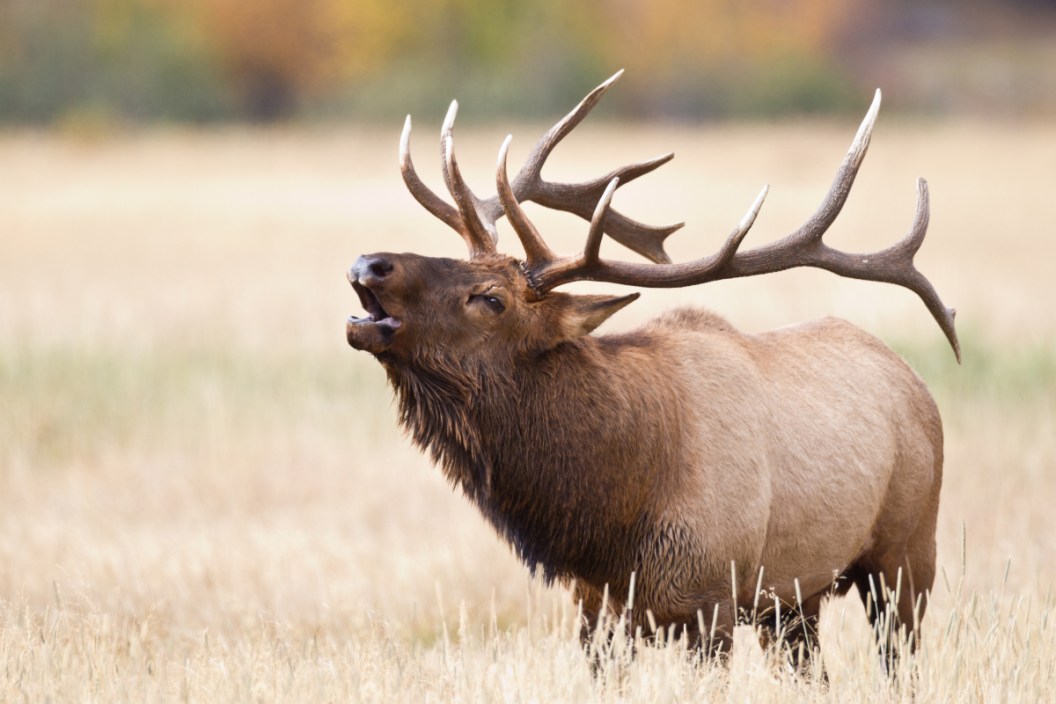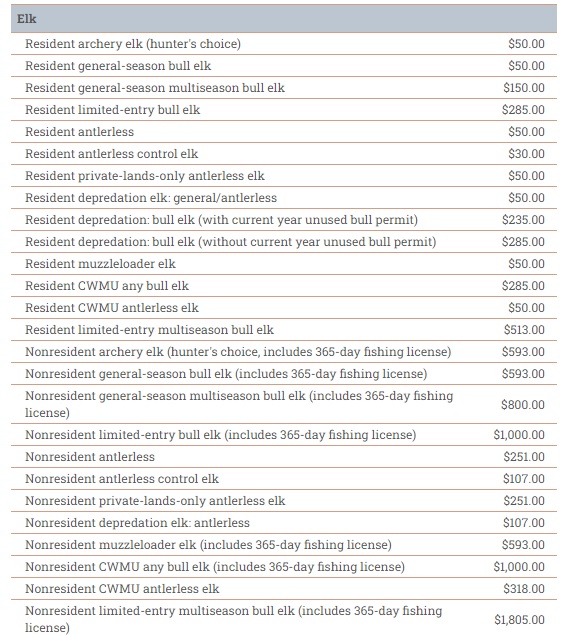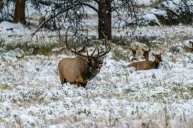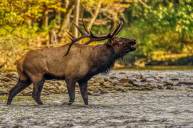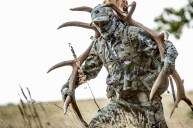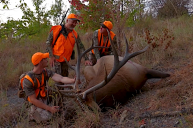Utah is a hard state to get tags for, but it holds some huge bulls.
When it comes to big game hunting states of the Western U.S., Utah is becoming more popular every year. Not just with mule deer hunting enthusiasts either. The state is becoming increasingly popular for elk hunting even though drawing an elk tag in some of the best areas is quite difficult.
Still, the state's climate, proximity to the Rocky Mountains and ideal elk habitat mean it grows some of the largest bull elk currently talking around North America. For hunters looking for an incredible hunting experience, the state of Utah is the place to go.
Today we will cover the basics of Utah elk hunting. We will briefly address the state's quirky draw system, basic seasons, and look at what it may cost for a nonresident interested in hunting there.
How do I get a Utah elk tag?
There are many ways to get a tag. Unfortunately, the Utah Division of Wildlife Resources has an incredibly weird and complicated system of applications and bonus points. Simply put, some of the best elk hunting areas give out a limited number of elk licenses and you will likely have to apply for years and build up lots of bonus points to be successful.
We will not dive into all the nitty-gritty details of Utah's draw because that could be an article by itself. Just know if you are putting in for a premium limited-entry or limited-entry deer hunt that you will not be drawn for an elk tag if successful for one of those deer hunts. Utah limits each hunter to drawing only one of those types of tags per year regardless of species.
In addition to those two draws, there is also the Cooperative Wildlife Management Unit (CWMU) program. Basically, this is a program that allows hunters access to premium private lands throughout the state. Utah residents can earn a permit for these areas in two ways. The first is through a drawing and the second is directly from a permit voucher issued by the landowner or CWMU operator. The only way for a nonresident to hunt these areas is through one of those vouchers.
The plus side of the CWMU is it often opens some truly amazing areas to elk hunting. The downside is that hunt dates are often quite limited. Many landowners also do no allow scouting prior to your hunt dates. The good news is many do offer guide services for an additional fee. If you are obtaining a voucher, expect the price to be quite high.
Utah also does sell over-the-counter elk permits for some areas. Although you will find some hunters do not bother because the public lands for these areas are often quite crowded with other hunters. Make sure you do your research carefully because some areas are spike bull elk only areas. You do not want to spend a lot of time applying for what you think is a trophy elk hunt only to find you are in a stricter management area.
Most experienced hunters will tell you trying for the limited entry elk permits is likely your best bet. One major downside to applying for Utah drawings is they require you to purchase a nonresident hunting license, which is $72 for hunters ages 18 and up. Youths get a slightly better deal at $29, but that is still a hefty fee to apply for a drawing. Especially when it may be many years before you are drawn. Once you are drawn, Utah's license costs break down as follows. This screenshot comes directly from the Utah DWR website.
As you can see, the fees are not too bad for any nonresident wanting a cow elk. Antlerless permit costs are reasonable. Bull elk hunts are not surprisingly, the most expensive hunts offered. At least the DWR throws in a 365-day fishing license with most of these tags as a bonus.
When is Utah's elk season?
As with many western states, the hunting seasons for elk take place mostly in the late summer and early fall. Archery elk hunters get the bulk of the rut while rifle hunts are scheduled near the middle part of October. The dates vary slightly depending on where you are. Some CWMU elk units will have different season dates. Here are the general season dates direct from the Utah DWR guidebook.
General archery any bull elk: August 21 - September 22
General archery spike elk: August 21 - September 10
General any legal weapon (rifle) spike and any bull elk: October 9 -21
General muzzleloader hunt elk: November 3 - 11
Youth general any bull elk: September 18-26
As a side note, the DWR notes in all Book Cliffs units, the any legal weapon spike season runs October 9-13 only. Overall, Utah's seasons are generous, especially for the bow hunting enthusiasts.
What are the best elk hunting spots in Utah?
In general, the southern parts of the state seem to grow bigger bulls than northern Utah. We must mention the Monroe Unit as a top destination. That unit was put on the map back in 2008 when Denny Austad bagged a 478 5/8-inch non-typical bull that still stands as the world record in Boone and Crockett's record book. Then there is Jimmie Ryan's 420 7/8-inch non-typical monster that was taken in Millard County. That bull still ranks number five in Pope and Young's all-time top 10.
Another top area to try for is San Juan. The area only doled out 11 permits but saw an 80 percent success rate with muzzleloader hunters in 2019 and a 100 percent rate with the four hunters who drew other tags. It is generally considered one of the places to go for giant bulls.
The Wasatch Mountains has seen extremely high success rates for muzzleloader and any weapon, as has Central Mountains, Manti. As we mentioned earlier, Book Cliffs areas have slightly shorter seasons, but they boast high success rates.
For CWMU hunts, consider looking into Deseret, which saw 103 hunters afield in 2019. A whopping 97 of them were successful, causing the area to rank among the highest for hunter satisfaction. Other CWMU hunts to check out with high success rates and hunter satisfaction include Old Woman Plateau, Patmos Ridge, Heaston East, Guildersleeve, Alton, Bar J Ranch, Blackhawk, and Bear Springs.
Is the elk hunting in Utah good?
Absolutely. The only real drawback to Utah is that it is usually more difficult to draw than a state like Wyoming or Idaho. However, when you do draw a tag for a coveted area, it is likely to be the hunt of a lifetime with the possibility of a once-in-a-lifetime bull a real likelihood.
And based on some of the giant bulls that have fallen there in recent years, we have still not seen the true potential of Utah's elk herds.
Products featured on Wide Open Spaces are independently selected by our editors. However, when you buy something through our links, we may earn a commission.
For more outdoor content from Travis Smola, be sure to follow him on Twitter and check out his Geocaching and Outdoors with Travis YouTube channels.
NEXT: THE AXIS DEER AND HOW THEY'RE IMPACTING PARTS OF THE UNITED STATES
WATCH
